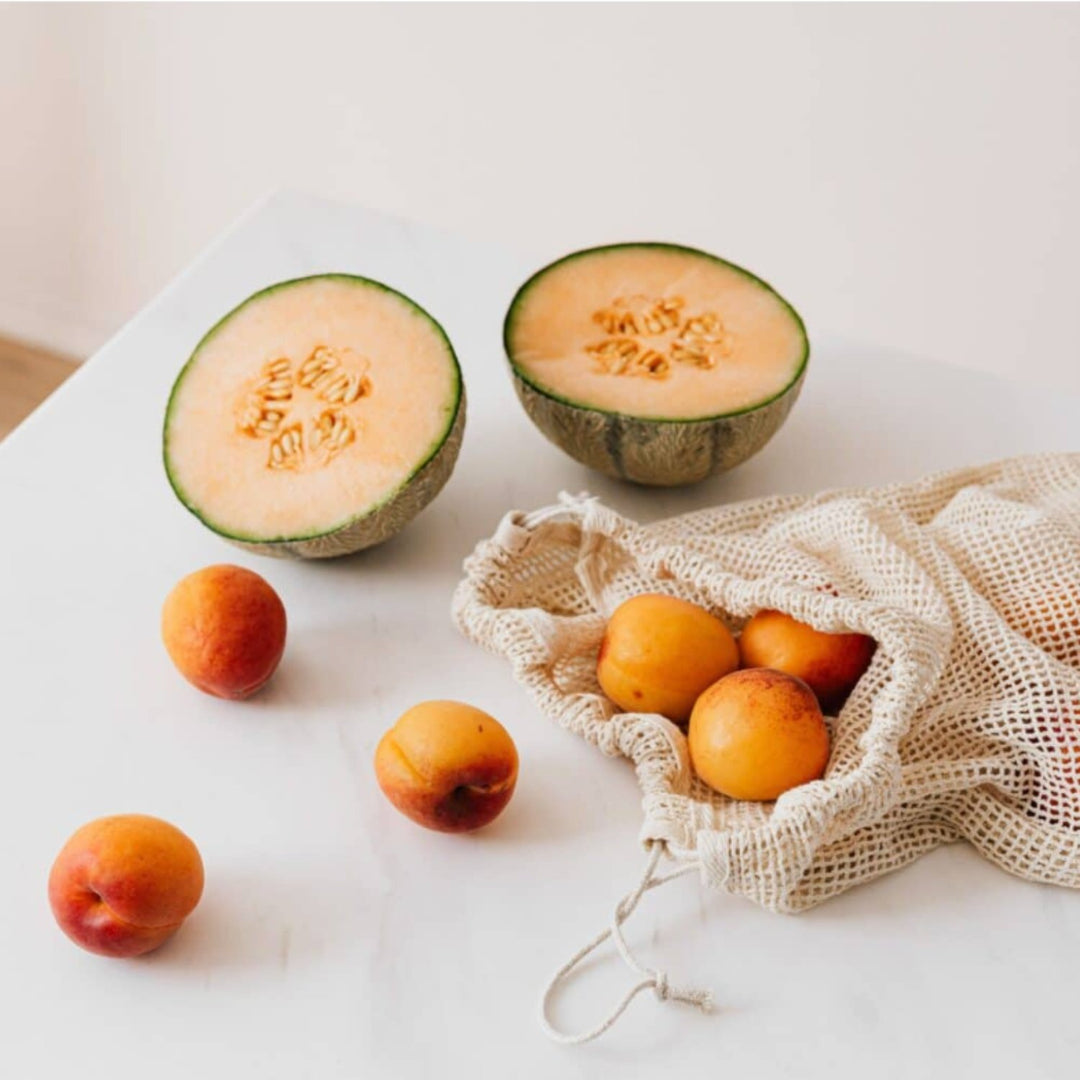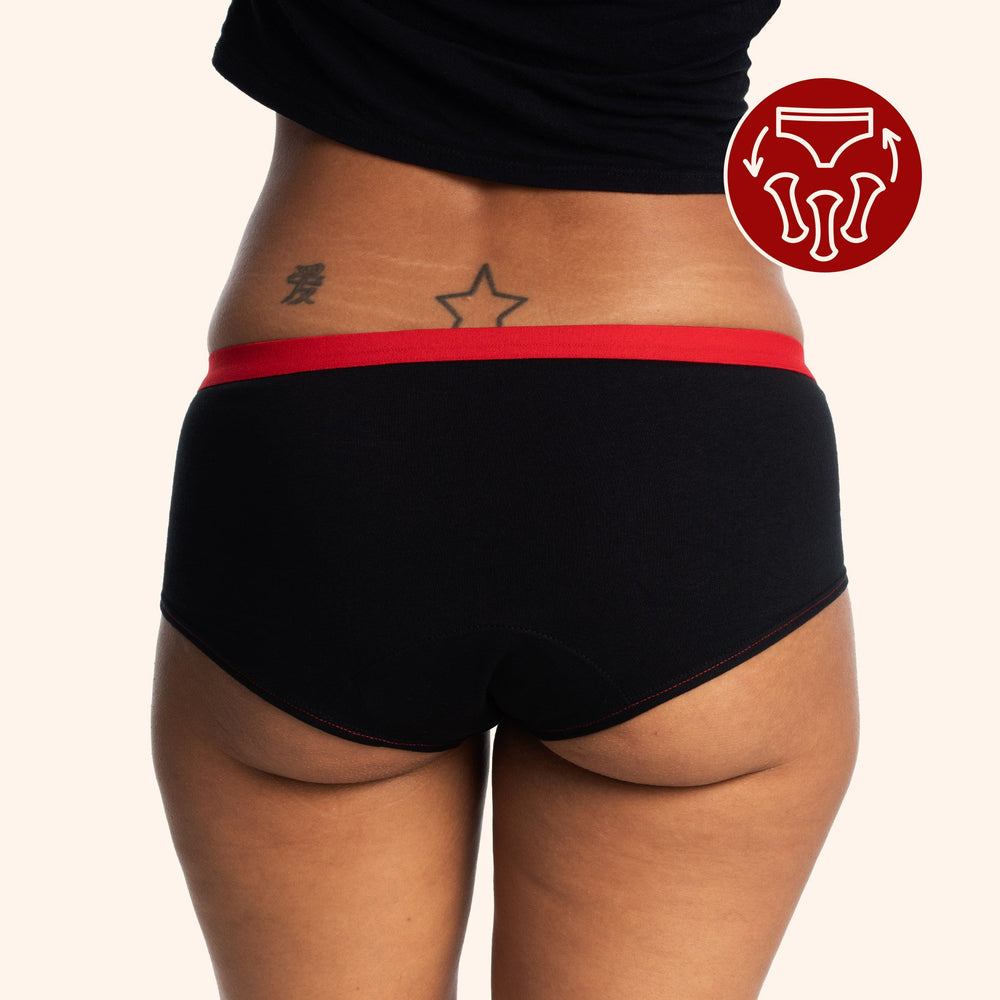They say that 1 in 10 women of child-bearing age suffers from endometriosis. But this statistic is starting to look dated; today, it’s more like 2 in 10 women, plus an uncounted number of trans men and non-binary people.
Why is this disease still so unknown and taboo?
In this article, we shed light on this little-addressed condition with the intention of offering solutions to improve sufferers’ day-to-day well-being.
We had the privilege of speaking with Marie-Josée Thibert, founder of Endometriosis Quebec, who has herself lived with the disease for 30 years, as well as Mélanie Roy, a yogatherapist specializing in hormonal health.
💡 This article is a summary of a Red Table organized by Mme L'Ovary. We leave the floor entirely to our invited experts and steadfast community. This article reflects their opinions and should in no way be taken as medical advice.
What is endometriosis?
Endometriosis is a chronic inflammatory gynecological disease. In concrete terms, it refers to endometrial-like tissue found in the body where it has no business being. Remember: the endometrium is the tissue that covers the inner lining of the uterus and, in the absence of fertilization, is shed every month (in short, menstruation!).
This tissue accumulates outside the uterus on neighbouring organs; in the majority of cases, it appears on the ovaries, fallopian tubes, bladder, and intestine; in more serious cases, it appears on the lungs or diaphragm; and in very rare cases, it appears on the brain and heart.
These cells react like the endometrium and, with the fluctuating hormones in our cycle, will bleed. When this type of tissue finds itself outside the uterus, it has no outlet outside the body. Blood will therefore accumulate and irritate the organs.
It’s important to remember that endometriosis is not a hormonal disease. Although it’s hormone dependent, meaning it fluctuates according to our estrogen and progesterone levels, it remains an inflammatory disease.
Its exact causes are not yet known. We do know, however, that they are linked to a deficient functioning of the immune system and to the quality of the intestinal microbiome.
General symptoms
Endometriosis is a complex disease, since it doesn’t affect everyone in the same way. Some people have no symptoms at all, while others suffer 24 hours a day.
In general, the symptoms are:
Pain during menstruation (but also throughout the cycle)
Pain during or after sexual relations
Gastrointestinal problems (hello famous endo belly!)
Urinary problems
Chronic fatigue
A complex disease with impacts in all spheres of life
Suffering is both physical and psychological.
Endometriosis has ramifications in many spheres of life. For example, pain during intercourse can lead to difficulties in intimate relationships. What’s more, people with endometriosis sometimes have to take time off work, which can cause professional problems. And so on and so forth; I’ll leave you to imagine all the different ways it can impact a person’s life!
After 11 years of medical wandering, Marie-Josée Thibert was at her wits’ end: “Not only was I physically exhausted, I was also psychologically burnt out. You end up saying to yourself, ‘There’s nothing wrong with me, but I’m suffering anyway, so it must be all in my head.’”
As the years go by, stress increases and we become more and more sensitive to this pain. It’s not easy to tell the difference between the impacts of the disease and its symptoms. “I’m anxious because I’ve had a stomach ache for 10 years, but I don’t have a stomach ache because I’m anxious," Marie-Josée shared with us, talking about her pre-diagnosis period.
The good news is that the disease doesn’t just evolve in phases of progression; there are also phases of regression. Knowing that endometriosis is a dynamic disease gives us hope, because we know that what we do on a daily basis can have a positive impact.
Why does it take so long to diagnose a problem?
In Canada, endometriosis takes about 5 years to be diagnosed. But a lot of people end up searching for an explanation for years, eventually believing that the pain is all in their heads. If this is your case, we’re with you, and we believe you. ❤️The pain is real.
Lack of access to information and specialized professionals
Endometriosis is still a misunderstood and underestimated disease.
There’s very little money invested in researching women’s diseases (frustrating, but unfortunately not surprising), so there’s not much interest in advancing research. Why would gynecologists subspecialize in endometriosis if there isn’t much money to be made?
A few days ago, we learned that Quebec’s first multidisciplinary referral centre for endometriosis has opened its doors. The centre aims to offer patients suffering from pain and infertility due to endometriosis access to specialized services and follow-up care.
This gives us hope! But remember, it’s 2023, and this is the first uniform service offering. It’s essential that research advances not only for sufferers but also for health-care professionals. Many practitioners lack adequate training on and awareness of endometriosis, and so they miss the boat when it comes to making a diagnosis.
Those affected suffer in silence
If diagnoses still take so long, part of the reason is because many people wait a long time before seeking help. They suffer in silence.
On the one hand, endometriosis touches on taboo subjects that make the disease even more invisible: sexuality, menstruation, and intimacy in general.
On the other hand, we live in a society in which menstrual pain is still normalized, even trivialized. “We women have become accustomed to believing that it’s normal to suffer from our periods, to have premenstrual symptoms that handicap our lives. But in a healthy menstrual cycle, none of this is normal,” laments Mélanie Roy. We’ll say it again: suffering from being a woman is not normal.
To those of you reading this, we invite you to ask yourself: Do my menstrual pains fall within the scales of a healthy cycle? If your cramps are getting in the way of your daily life, I encourage you to consult a health professional. Because no, it’s not in your head!
As Marie-Josée puts it so well: “Free up your voice, and talk to someone you trust. That’s the first step toward regaining power.”
Western medicine: Treatments and surgery
There is as yet no cure for endometriosis. There are, however, treatments that relieve symptoms.
The first step is finding a doctor who knows what they’re doing so you can be sure of getting proper follow-up throughout the entire process. Endometriose Québec provides a list of all the specialists in the province on its website.
From there, when it comes to short-term treatments, anti-inflammatories and analgesics are often used to relieve pain.
There are also hormonal treatments designed to reduce endometriosis cell proliferation and bleeding (e.g., the pill, hormonal IUD, injections, etc.). This type of treatment is not without side effects, so it’s essential to seek advice from a health-care professional.
Surgery can sometimes be used to remove the lesions and scar tissue associated with endometriosis. Excisional surgery, for example, involves removing the endometrial cells. It’s important to remember that just because the cells are surgically removed doesn’t mean they’ll never come back. Prevention, therefore, goes hand in hand with treatment to ensure its longevity.

Integrative medicine: Prevention and the path to well-being
Integrative medicine sees the human being as a whole, including their physical, emotional, psychological, social, and professional conditions.
Here are a few tips on how to live well with illness on a daily basis. Little things add up to big miracles!
Honouring our cyclical nature
To take charge of our well-being as people living in female bodies, the key is recognizing our cyclical nature.
Our menstrual cycle is made up of 4 inner seasons, each marked by hormonal variations. Since endometriosis is a hormone-dependent disease, it fluctuates with our hormones and, therefore, with our menstrual cycle.
By understanding the different phases of your cycle, you’ll be able to figure out when you’re better able to do certain things. This will enable you to live in harmony with your cycle instead of being subjected to it and to organize your schedule (as much as possible!) according to your energy level. For example, the premenstrual and menstrual phases are times when, generally speaking, we feel a greater need to be inside ourselves and to offer self-care.
“Living by honouring this cyclical nature and the needs of our hormones can make a huge difference.” -Mélanie Roy
☾ If you have an irregular cycle, you can connect to the Moon’s cycle and observe how you feel during its two phases(ascending and descending).
Stress and anxiety management
Managing stress and anxiety means reducing pain signals. Stress is one of the biggest endocrine disruptors, altering the way our hormones work.
OK, the big question: Does stress cause endometriosis attacks, or does endometriosis cause stress? The chicken or the egg?
Both statements are true. It’s the vicious circle of pain. The more you hurt, the less you sleep, the more stressed you are, and the more you hurt.
It’s up to you to find ways to relieve stress and anxiety. Deep breathing, yoga, meditation, painting, running... The important thing is to choose yourself.
Power supply
Never underestimate the power of this first medicine!
To see profound changes in the lesions caused by endometriosis, you need between 6 and 12 months of dietary modifications. However, you’ll quickly see a significant reduction in symptoms if you eat consciously.
Some foods to choose:
Anti-inflammatory foods, such as turmeric.
Plenty of fruit and vegetables: ideally, buy organic as much as possible to avoid exposure to endocrine disruptors (pesticides) that could cause inflammation.
Berries: excellent antioxidants.
Cabbage: helps eliminate excess estrogen.
Green tea: another wonderful antioxidant!
Dark chocolate: good news! 70% dark chocolate is rich in magnesium, a natural anti-inflammatory that has a positive effect on the parasympathetic nervous system (great for mental calm).
Fiber and healthy fats.
Some foods to avoid:
Refined sugars.
Red meat: it’s reputed to be inflammatory. We therefore recommend a plant-based diet, with small amounts of poultry and fish.
Everyone is unique and reacts differently to different foods. You can therefore do tests and substitute one food at a time to observe how your body adapts.
Pssst! The pleasure factor is also super important, so allow yourself to eat what brings you joy! Last tip: eat with your eyes first, meaning the more colours on your plate, the better!
Yogatherapy and deep breathing
Pelvic yogatherapy can do a world of good to stabilize, relax, stretch, decongest, and oxygenate the organs, muscles, and ligaments of the pelvis, creating space and promoting better circulation of breath, blood, and energy.
For example, you can make circular movements with your pelvis and open postures, such as sitting on a chair with your legs apart.
Deep breathing, which can be practised on its own or in conjunction with yogatherapy movements, brings oxygen to the lower abdomen. It helps to release the burdens trapped in the pelvic floor and hips. You’ll see: connecting with this area of the body is very liberating and can bring up emotions.
Self-massage
Good news: you’ve got two hands, and you can use them to relieve your aches and pains!
You can massage your lower abdomen in a clockwise circular motion, which helps to relax the tissues. If you feel like it, stimulate your senses with things that make you feel good, like essential oils.
Tip: Massage yourself with castor oil, which is extraordinary for easing pelvic pain. You can also soak a washcloth in castor oil, apply it to your belly (with or without a hot water bottle on top), and lie there for as long as you feel is necessary. Breathe in, breathe out!
Where to start? The logbook as an ally
Now that you’ve got all this information, you might be wondering where to start. Well, don't panic!
You can’t make all the changes at once. That’s why we recommend keeping a diary to keep track of what really helps you feel better.
Your diary will not only help you make the links between your actions and your symptoms so that you can ask yourself the right questions, it will also help you become an expert on your body, which will be very useful when you meet health professionals.
Here are some ideas for what you can write down each day:
What phase of your cycle are you in?
Did you sleep well?
What’s your energy level?
What are your physical symptoms?
How do you feel emotionally?
What did you eat today?
There are as many symptoms of endometriosis as there are sufferers. We invite you to meet yourself with kindness ♡
“When you’ve been suffering for years, at some point you disconnect from your body. My body had become my enemy. I didn’t want to live in it anymore, because it made me suffer,” Marie-Josée Thibert confided. But it is possible to get better. Thanks to every little action you orchestrate in your life. Quietly.
Remember that if you’re suffering, you have the right to be accompanied, listened to, believed, heard, and equipped, whatever your experience.
Some resources
More about Marie-Josée Thibert: Instagram page
More about Mélanie Roy: Website and Instagram page
Le Yoni Loft - 7-day free trial
Hormonal yogatherapy - Free 5-day challenge
Yonity - Solidarity collective with the participation of Mme L'Ovary















